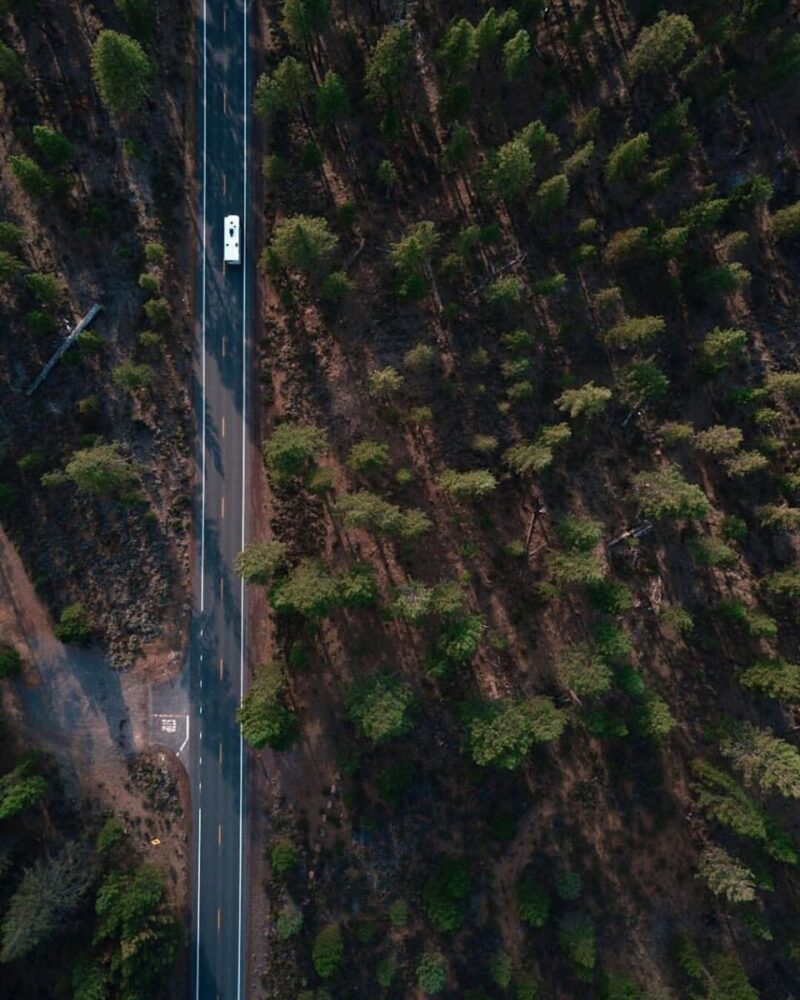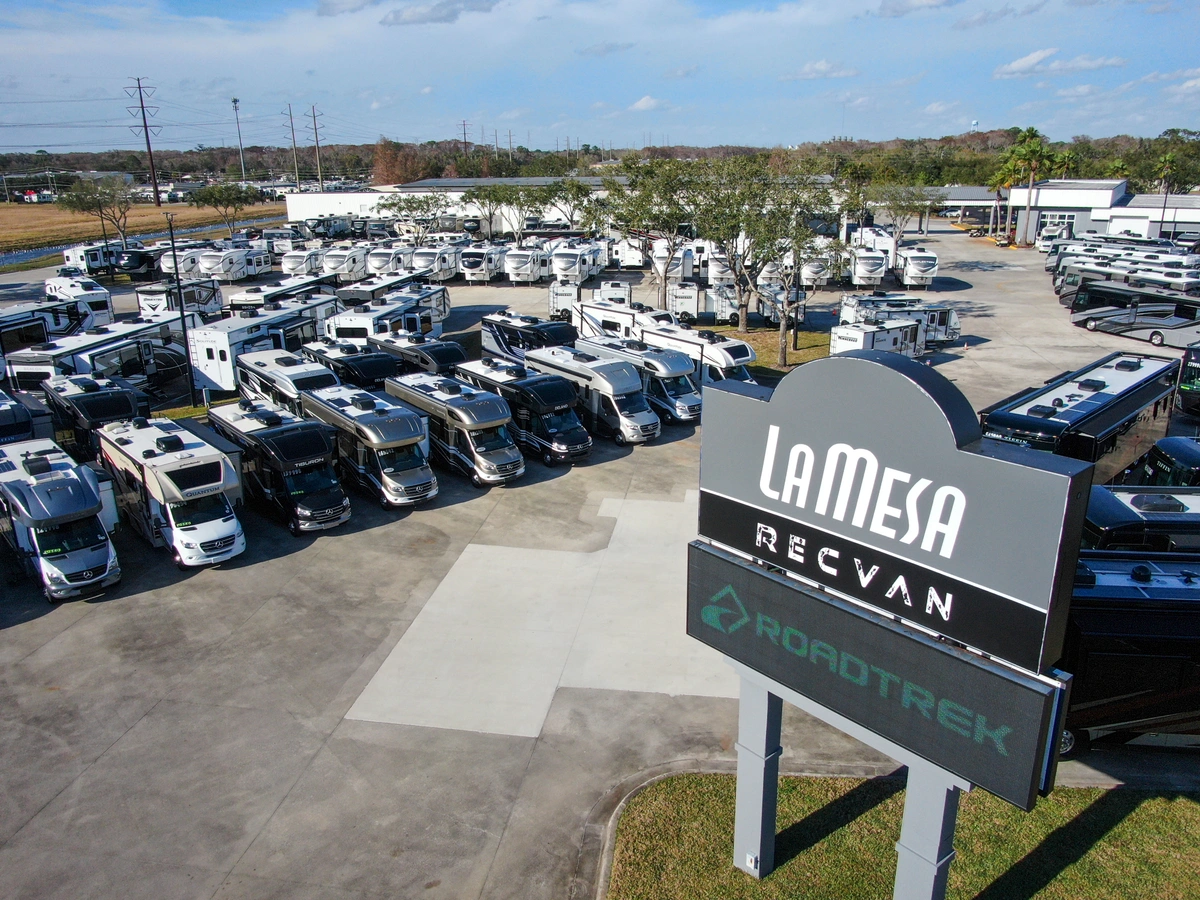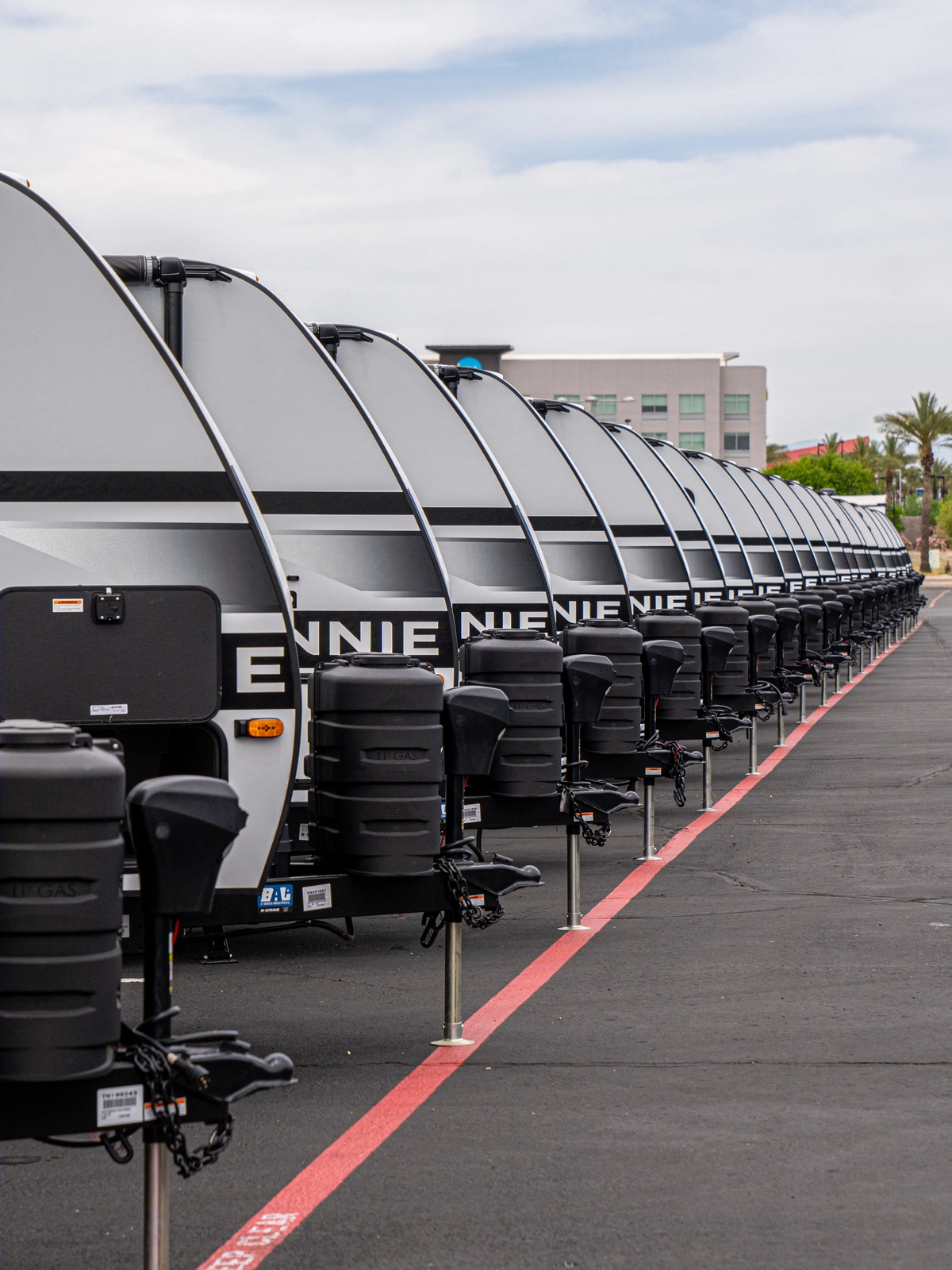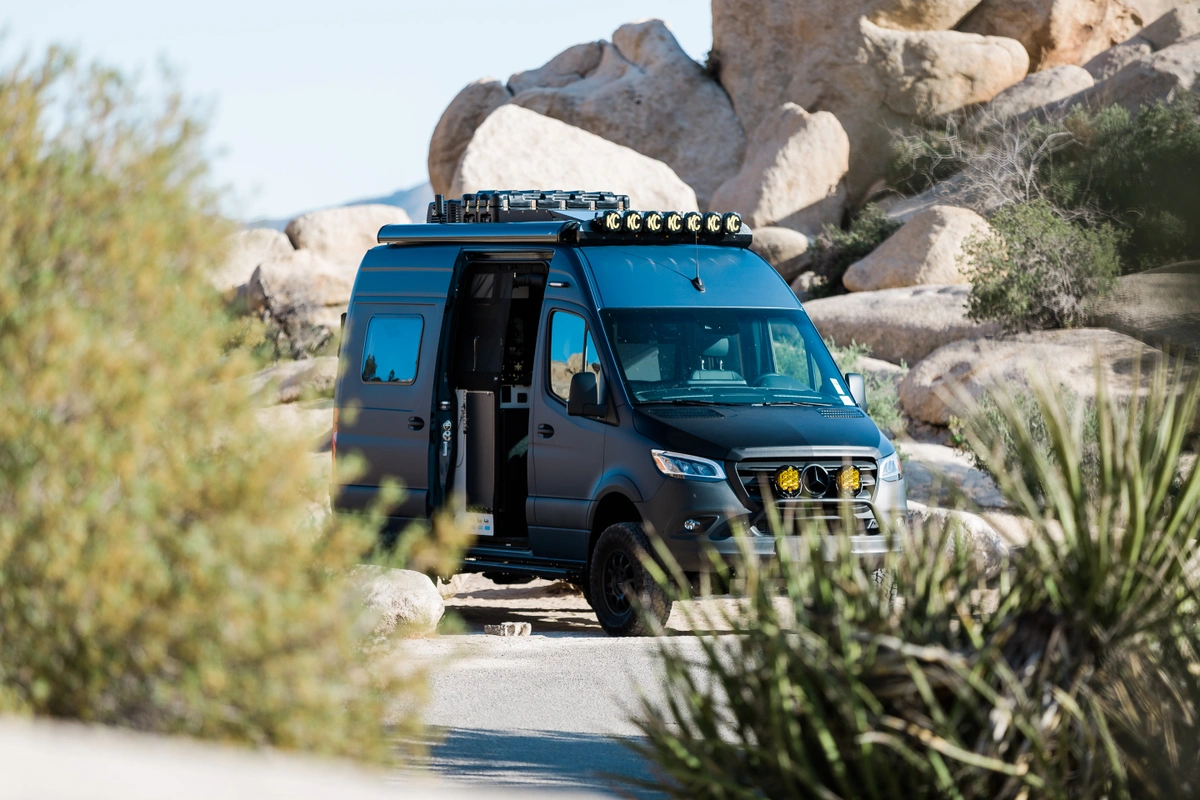RV Glossary
Are you a seasoned road warrior who finds yourself unfamiliar with new RV terms or in need of a refresher? Perhaps you're in the market for your first rig but feel overwhelmed by RV lingo you don't understand. RV enthusiasts, newbies, and veterans alike have long shared enthusiasm for getting out on the open road. While the RV community is vast and differs greatly from place to place, there are similarly, many moving parts when it comes to talking about RVs. From RV types to classes and manufactures as well as ways to camp and equipment in the units themselves, there are dozens of terms that RVers use on the day to day that aren't necessarily common knowledge to your everyday person.
We don't want you to ever feel out of the loop so we've created the ultimate urban dictionary of RV terms. Reference our guide anytime you need! Think of this list as your go-to option for any question you might have on definitions of RV related topics or to look up terms new to you. The guide is in alphabetical order and is incredibly easy to navigate. Explore La Mesa RVs RV glossary below.
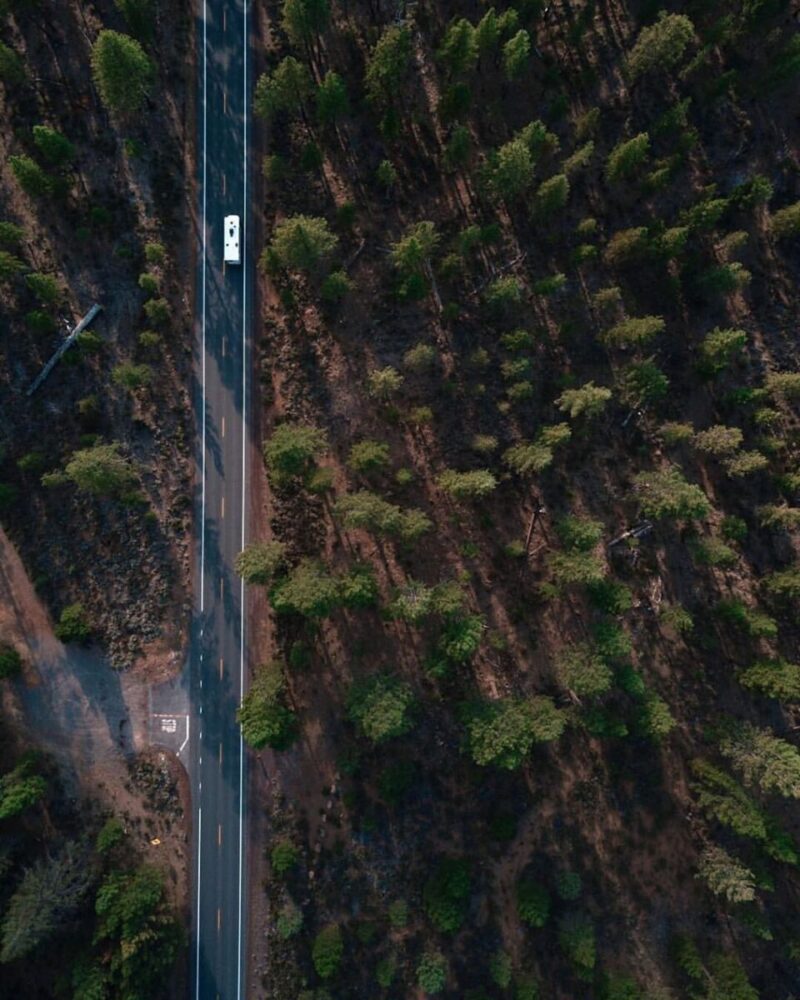
Photography: @themadlifestyle
RV Terms
5th Wheel Trailer / Fiver Trailers: Designed to be coupled to a special hitch that is mounted over the rear axle in the bed of a pickup truck or a specialized vehicle prepared for 5th wheel compatibility. The living space typically has over-hitch sleeping and comes with its heating, air conditioning, propane supply, electrical systems, and water tanks.
Absorption Refrigerator: Found in some RVs, this type of refrigerator uses a heat source to provide the energy needed to drive the cooling process of refrigeration.
Adventure Van: About the size of a family minivan, but containing many comfort of home and used for camping, traveling, and exploring.
Air Brakes: A type of friction brake for vehicles in which compressed air pressing onto a piston is used to apply pressure to the brake pads needed to stop said vehicle. Also known as a compressed air brake system.
Armless Awning: A type of awning found in some RVs, where the hinges unfold horizontally, rather than the traditional vertical activation of a standard RV awning.
Back-In Site: A campsite that requires you to back your vehicle into it.
Basement: The large storage area underneath the floor of the RV, accessible from outside storage doors. Usually refers to storage in Class A, Class C, and 5th wheels.
Basement Model: An RV that incorporates a large storage area underneath a raised chassis.
Batwing: A standard roof mounted, over-the-air TV antenna resembling a pair of wings.
Black Water: Waste (sewage) from the toilet that is flushed into a black water holding tank, usually located beneath the main floor of the RV.
BLM: The Bureau of Land Management manages over 400 campgrounds that offer solitude and vast outdoor recreation areas for campers ready to explore.
Blue-Boy: A term for a plastic portable waste handling tank, often in a bright shade of blue.
Boondocking: Camping in an RV without the benefit of electricity, fresh water, and sewer utilities. Aka: Dispersed Camping, Dry Camping, Primitive Camping.
Breakaway Switch: The safety switch that automatically activates the brakes of a trailer, should it become separated from its tow vehicle.
Bumper-Pull: A term used for the hitch or towing method of a conventional travel trailer or pop-up.
Cabcover: The part of a type C motorhome that overlaps the top of the vehicle's cab, usually containing a sleeping, entertainment, or storage unit.
Captain: A term used to designate the driver of an RV.
Caravanning: Traveling and camping with other RVers, where everyone has their own rig. Full-time RVers are highly independent and caravanning is often very fluid, with people coming and going freely on their own schedule.
Cargo Weight: The actual weight of all items or gear added to the Curb Weight of the vehicle or trailer.
CCC: Cargo Carrying Capacity refers to the maximum allowable combined weight of all occupants and cargo carried in a vehicle.
Chassis: The framework in which an RV is built upon. In motorhomes, the chassis typically includes the engine and transmission. Chassis The framework that supports the entire motorhome.
Chassis Battery: The battery that starts the engine and runs the automotive systems in a motorhome.
Chocks Devices: that prevent wheels from rolling when parked.
Chucking: A back and forth motion, sometimes violent, experienced during towing and usually caused by an unbalanced trailer or uneven roadway.
Class A: The largest RV ranging from 28 to 45 ft. long and includes converted buses and purpose-built models. Powered by either diesel or gasoline.
Class B: Also called a camper van. Typically built on a standard full-sized van chassis, with a raised roof to provide additional headroom. Models usually range from 16 to 23 ft. It is powered by either a diesel or a gasoline engine.
Class C: Also called a mini-motorhome. A mid-sized RV ranging from 16 to 33 ft. built on top of an existing truck and van chassis. It has many of the same advantages and considerations of a Class A at a lower overall cost.
Coach: Another name for a motorhome.
Co-Captain: A term used to designate the individual who generally rides in the front passenger seat of an RV to assist the driver along the trip.
Cockpit: Where the driver sits to drive a motorhome.
Convection Microwave: The combination of a standard microwave oven and a convection oven, heating food at higher temperatures than the standard conventional microwave.
Converter: A device that can be used to convert 110-volt household (AC) power into 12-volt battery (DC) power, while charging the batteries of your motorhome simultaneously.
Cooktop: The cooking unit (whether hot plates or burners) fixed into the top of a counter surface area.
Co-Pilot: A term used to designate the individual who generally rides in the front passenger seat of an RV to assist the driver along the trip.
Curb Weight: The weight of a basic RV unit without fresh or wastewater in the holding tanks but filled with automotive fluids such as fuel, oil, and radiator coolant.
DEF: Diesel Exhaust Fluid is a non-hazardous solution used to break down dangerous fuel emissions created by a diesel engine.
Diesel Puller / FRED: Aka: Front Engine Diesel. A term used for a front-engine diesel motorhome.
Diesel Pusher: A motorhome with a rear diesel engine.
Dinghy / Toad: A vehicle towed behind a motorhome, sometimes with two wheels on a special trailer called a tow dolly, but often with all four wheels on the ground.
Drawer Dishwasher: A dishwasher designed to fit into a cabinet space typically reserved for a cabinet drawer.
Dry Weight: The weight of the RV without any fuel, freshwater, propane, or passengers.
Dual Fuel Fills: A fuel system set up to allow drivers to conveniently fill an RV's fuel tank from either side of the unit.
Dually: A pickup truck, or light-duty tow vehicle, with four tires on one rear axle.
Ducted A/C: An air conditioning system made up of a series of ducts within the roof space of an RV to direct and control cool air across each room or space.
Dump Station: The area (usually a concrete pad) with an inlet opening connected to an underground sewage system, used for dumping black and gray water tanks.
Electric Bay: Generally found on the exterior of a motorhome, the electric bay is where most electric connectivity components can be found. Set-up may vary by manufacturer, however, this is where most carry the RV's shore power cord and control.
Front Cap: The front surface of an RV, which creates the build and shape of the unit.
Full Hook-Up Utilities (FHU): Campground with water, electric (aka shore power), sewer hook-ups, and sometimes cable at your campsite.
Full-Timers: People who live in their RV year-round.
Galley: The RV kitchen area.
Garage: Typically found in Toy Haulers, the area that is set up for placing larger "toys" such as motorcycles, dune buggies, four-wheelers in the RV.
Genset: This refers to a motorhome's electric generator supplying power to house amenities.
Glamping: Glamorous camping, i.e., luxurious camping.
Going Dark: Full-timers are often overwhelmed by the endless opportunities for social interaction. When it's time to buckle down and get some work done, some stop posting their location on social media for a stretch and "go dark" for a while (often announcing this will be happening first).
Gooseneck: A colloquial name for fifth-wheel travel trailers.
Gray Water Tank: This is where used water from sinks and showers is stored.
Gross Axle Weight Rating (GAWR): The manufacturer's rating for the maximum allowable weight (including tires, wheels, brakes, and the axle itself) that an axle is designed to carry. GAWR applies to tow vehicles, trailers, 5th wheels, and motorhome axles.
Gross Combination Weight Rating (GCWR): The maximum allowable weight of the combination of a tow vehicle and trailer/5th wheel or motorhome and dinghy: the weight of the vehicle, trailer/5th wheel (or dinghy), cargo, passengers, and a full load of fluids (freshwater, propane, fuel, etc.)
Gross Trailer Weight Rating (GTWR): The maximum allowable weight of a trailer, fully loaded with cargo and fluids.
Gross Vehicle Weight Rating (GVWR): The total allowable weight of a vehicle, which includes the vehicle's chassis, body, engine, fluids, fuel, accessories, passengers, cargo, etc.
Half (1/2) Bath: A small bathroom that only contains a toilet and a sink. Also known as a powder bath.
Halo Shower: A shower system that can be stored away to keep your visual space open, while still giving you the benefit of an indoor shower when you need it.
Head: A slang term used to refer to the restroom.
Holding Tank: The freshwater, gray water, and black water tanks on the RV. The freshwater tank is for drinking, cooking, and washing; the gray water tank holds wastewater from the sinks and shower; the black water tank holds sewage from the toilet.
Honey Wagon: A mobile service that will empty the waste holding tanks on an RV.
Hose Bib: A campsite faucet with fresh water. This is what you connect your water hose to.
House Battery: The battery used to supply 12-volt power to the housing amenities of an RV.
Hula Skirt: A guard or skirt installed on the RV's back bumper to protect the vehicles directly behind them from debris thrown up by the RV's rear wheels. Usually, the length of the rear bumper and resembles a short version of a Hawaiian hula skirt, hence the term.
Hydronic Heat: Such as Aqua-Hot, this heating system uses a boiler to circulate hot anti-freeze through a series of heat exchangers throughout a motorhome.
Induction Cooktop: A cooktop that operates using direct induction heating. This technology allows for higher-powered and faster increases in temperature than convection or conduction cooktops.
In-Motion Satellite: A television satellite designed to allow users to watch television via TV signal while out on the RV is in motion.
Inverter: A type of converter that converts DC power into AC power. This enables the house battery to run AC appliances within the RV.
Kingpin: A 2-inch or 3.5-inch diameter vertical steel pin protruding from the bottom of the front of the RV that is part of a 5th wheel coupling.
Leveling Jack: A jack lowered from the underside of trailers and motorhomes to level the vehicle. It's designed to bear a significant portion of the RV's weight, even lifting it off the ground on certain models.
Loft Bed: A type of sleeping space found within an RV or motorhome where the bed rests on a raised platform above another multi-use area. Typically the bed is lowered when used and stowed into the attic area when not in use.
Long Term Visitor Area (LTVA): A seasonal permit granted by the Bureau of Land Management for a maximum of 14-days stays on designated undeveloped public lands.
LP Gas Liquefied Petroleum Gas: LP gas is used to fuel appliances in the RV, such as the stove, oven, water heater, and refrigerator. Propane tanks are usually rated as pounds or gallons.
RV Glossary M-Z
Macerator: An electrical pump that allows the contents of black and gray tanks to be emptied into a remote sewer connection.
MBUX (MBUX) Mercedes-Benz User Experience: is the most advanced multimedia system developed by Mercedes-Benz. This infotainment system is found in a series of Class B motorhomes.
Moochdocking: Boondocking for free on someone's property, such as a relative or friend.
Non-Potable Water: Water not suitable for human consumption.
O/N Overnight parking for RVs: "No O/N Parking" means "No Overnight Parking".
Outdoor Shower: A minimal shower unit that can be found and used outside an RV. Several manufacturers designate access through the wet bay.
Part-Timers: People who use their RV for longer than the normal vacation time but less than one year.
Payload Capacity: The maximum allowable weight that can be placed in or on a vehicle, including cargo, passengers, fluids, and fifth-wheel or conventional hitch loads.
Pigtail: An electrical device that allows a 50 amp or 30 amp shore cord to be connected to an electrical outlet that is rated at a lesser amount. Variations exist.
Pilot: A term used to designate the driver of an RV.
Pin Weight / Kingpin Weight: The weight from the trailer that is transferred to the kingpin.
Pop-Out: An area that is built into a motorhome that extends the unit's side walls to create more interior living space when stationary.
Pop-Top: An adaptable roof type for camper vans that remain down when traveling and easily "pops up" for additional camping space when parked.
Pop-Up Camper: Also known as a tent camper or a folding trailer, it has room for double beds, some screened-in sleeping space, a sink, a cooktop, a small refrigerator, and usually a dinette that converts to another sleeping area. It is collapsible for easy storage and towing.
Porpoising: The up and down pattern of motion experienced in an RV while on the road.
Potable Water: Drinking water that is safe to drink or to use for food preparation.
Powder Bath: A small bathroom that only contains a toilet and a sink. Also known as a half bath.
Primitive Camping: Also known as "tent-only" camping. This does not include any category of RV or motorhome camping.
Puller: A term for front-mounted diesel engine motorhomes.
Pull-Through: A campsite with easy access and departure, allowing you to set up and leave without backing into the site.
Pusher: A slang term for rear-mounted diesel engine motorhomes.
QD: A Quiet Diesel Generator
Receiver: The part of the hitch into which the hitch bar is inserted.
Rectivity: An outdoor activity that requires the use of an adventure van and involves making lifelong memories while escaping the mundane through travel and adventure.
Residential Refrigerator: Standard refrigerators that use a compressor to keep inside temperatures low. As they require a constant 120-volt power source too, residential refrigerators are known to be less energy efficient than RV refrigerators.
Road School: The intentional design of learning adventures to educate children; destination education that combines geographical location with hands-on learning experiences.
Rotomolded: This refers to a manufacturing process known as rotational molding. The material is ideal for manufacturing certain RV parts due to its lightweight in comparison to traditional metal components.
Rubber Roof: As opposed to vinyl, aluminum, or fiberglass, RV rubber roofs are typically more affordable to maintain or repair and are more lightweight.
Running Board: The narrow step fitted under the side doors of a motorhome.
Salon: A term used to refer to the bedroom area of an RV.
Self-Contained: This refers to an RV that has indoor plumbing equipment included, as opposed to small pop-up campers and campervans that sometimes have an exterior toilet or kitchen facilities (or lack holding tanks).
Sewer Doughnut: Rubber ring that seals an RV's dump hose to the campsite sewer hook-up so gases and odors don't escape. They are required at most campsites and hook-up locations.
Shank: Also called a hitch bar or stinger, the shank is a removable portion of the hitch system that carries the ball or adjustable ball mount, and slides into the receiver.
Shore Cord: The external electrical cord that connects the vehicle to a campground electrical hookup.
Shore Power: A boating term adopted by the RV community referring to electricity provided to the RV via a shore cord from a fixed, external source other than the RV's battery or generator.
Sky Light: A clear or opaque roof-top dome (generally found above the shower or living room area of a motorhome) sealed to allow for natural lighting within an RV.
Slide-Out: An add-on to a motorhome that extends the unit's side walls to create more interior living space when stationary.
Snowbirds: People who take their RV south in the wintertime and north in the summer.
Stabilizing Jack: A jack inserted under or lowered from trailers and motorhomes to stabilize the vehicle. It's not designed to bear a significant portion of the RV's weight, but only a small amount to reduce movement during occupancy. Stabilizing jacks are generally found toward the back of trailers, under the kingpin of fifth wheels, and under some slides.
State Recreation(al) Area (SRA): Public land managed by states, with some camping areas offering only rudimentary amenities.
State Wildfire Areas (SWA): Most State Wildlife Areas are strictly for wildlife preservation, management, and hunting. Unlike the US National Wildlife Refuge system, camping is often prohibited.
Sticks N' Bricks: RV slang for a standard house.
Stinky Slinky: A slang term for the sewer hose, constructed from a spiral wire covered with vinyl. One end attaches to the RV piping and the other into the local sewer dump facilities.
Super C: A type of motorhome that looks like an overgrown Class C. Super C motorhomes usually range in the 35 foot to 40-foot length and typically are built with a heavier duty diesel engine than a standard Class C motorhome would utilize.
Sway Bar System: Equipment RVers use to eliminate or reduce the side-to-side way motion of a towable RV.
Tail Swing: Describes the extra distance the rear end of the RV uses during a turn. The longer the space between the rear wheel and the end of the RV the larger the tail swing will be. It is very important to know how much tail swing your RV has when turning corners in tight situations.
Tankless Water Heater: Typically half of the size and weight of a standard water heater, tankless water heaters utilize approximately 50% less propane to provide heated water when in use. These water heaters do not store water, allowing users to limit consumption, tow weight, and storage space.
Telescoping: Compacting from front to back and/or top to bottom to make the living unit smaller for towing and storage.
Tongue: Weight This is the actual weight pressing down on the hitch ball located on the tow vehicle, which is generally 10% - 15% of the Gross Vehicle Weight (GVW).
Tow Dolly: A small two-wheeled trailer used to attach a tow vehicle to the back of an RV.
Tow Rating: The maximum weight your tow vehicle can safely tow, set by the vehicle manufacturer.
Tow Vehicle: The front vehicle that tows or hauls an RV camper.
Towable RV / Travel Trailer: Small RVs (folding camping trailers, teardrop campers, travel trailers, and fifth-wheel travel trailers) designed to be towed by a motorized vehicle (car, van, or pickup truck) and don't require a special highway movement permit. They include the HVAC system, electrical systems, and water tanks, and sleeping space, with some having bathrooms and kitchens.
Towed (Toad) Vehicle: The rear vehicle being towed behind an RV camper.
Toy Hauler: The term for a fifth wheel, travel trailer, or motorhome with built-in interior cargo space for small cars, dune buggies, four-wheelers, motorcycles, or other toys. Features include a large rear door that opens down to create a ramp, a dedicated garage area or fold-away furniture to provide storage space, and often a third axle to support the heavy items.
Transfer Switch: Used to switch between multiple sources from shoreline power to generator power. Both manual and automatic transfer switches are available for RVers.
Two-Way Refrigerator: A type of RV refrigerator that can conveniently be operated using two different sources of power: 110-volt electrical supply and propane gas.
U.S. National Recreation Areas (NRA): The Army Corps of Engineers manages recreation lands around projects like dams and bridges. Camping facilities are often sparkling clean with level parking aprons (after all, engineers designed them!).
Underbelly: A term used to describe the bottom surface of an RV, also known as the undercarriage.
W/E: A campsite that offers only water and electrical hook-ups.
Wallydocking: Parking overnight in a Walmart(tm) parking lot. Walmart founder Sam Walton was an RVer and made it corporate policy to welcome RVers to stay overnight free in Walmart lots. RVers may choose Wallydocking on a big travel day, when staying in an urban area, or when they need to stock up on supplies and don't have time to get to an RV park before dark. Obtaining permission from the store manager is always recommended as some cities prohibit this practice.
Weekenders: RVers who typically travel on weekends throughout the year.
Wet Bath: A bathroom that includes a toilet and shower in the same space. Usually found in smaller campers and travel trailers.
Wet Bay: Generally found on the exterior of a motorhome, the wet bay is where most of an RV's plumbing components can be found. Set-up may vary by manufacturer.
Wet Weight: Term used by RVers to describe the weight of an RV with all storage and holding tanks full. i.e., water, propane, etc.
Wheel Chocks: Slanted blocks, usually made of plastic material but sometimes wood used to prevent the RV from rolling.
Wide Body: The term for an RV exceeding the normal eight-foot width. Wide bodies are usually 102'' (8' 6'') wide.
Workamper: An RVer who trades a little labor for a free campsite, salary, or both.
Yamping: Camping in a yard or driveway of someone's home.
Yaw: Fishtailing action of the trailer caused by external forces that set the trailer's mass into a lateral (side-to-side) motion. The trailer's wheels serve as the axis or pivot point. Also known as "sway."
End of RV Glossary
Heading south for the winter in search of the best RV destinations to venture to? Check out our guide to The Hidden Gems of Florida, The Sunshine State to explore the best locations to RV to in Florida. From a hidden island to the states must-see abstract outdoor museum, you'll find something everyone in your group will love.
